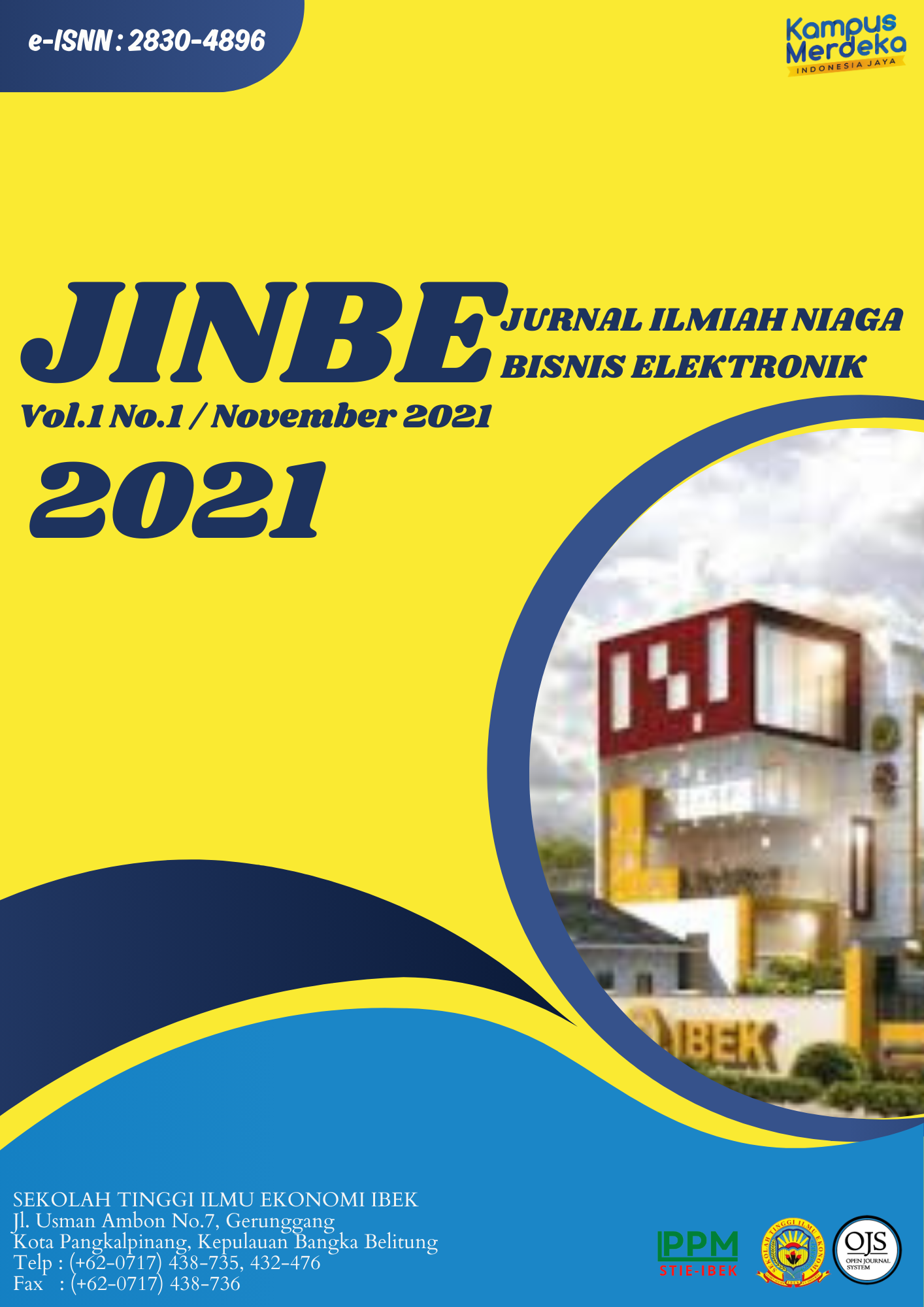ANALISIS PENGARUH E-COMMERCE DAN SISTEM INFORMASI AKUNTANSI TERHADAP KEPUASAN BELANJA GENERASI MILENIAL DI KOTA PANGKALPINANG (STUDI KASUS PADA PORTAL BELANJA ONLINE SHOPEE.CO.ID)
DOI:
https://doi.org/10.61533/jinbe.v1i1.157Kata Kunci:
E-Commerce, Accounting Information Systems, Shopping SatisfactionAbstrak
This is the result of a thesis research compiled by Desy Febriyani, Accounting Department STIE-IBEK. The title of this research in Indonesian "Analisis Pengaruh E-Commerce dan Sistem Informasi Akuntansi Terhadap Kepuasan Berbelanja Di Kota Pangkalpinang (Studi Kasus Pada Portal Belanja Online Shopee.co.id)" was run from October 2020 to January 2021.
The purpose of this study was to determine whether the independent variables consisting of: E-Commerce and Accounting Information Systems to the dependent variable, namely Shopping Satisfaction. This research was conducted using qualitative methods of data analysis, descriptive statistics, multiple linear regression, coefficient of determination, assumption test. classics, and hypothesis testing.
The data used in this study are primary data. Statistical data processing uses the form of the JASP 0.9.2.0 program. Partial data processing on the E-Commerce variable has an effect on Millennial Generation Shopping Satisfaction by calculating the t value (3.831)> t table (1.6702) and the sig value 0.000 <0.05 so that H0 is rejected and H1 is accepted. The Accounting Information System variable partially affects the Millennial Generation's Shopping Satisfaction t count (3.664)> t table (1.6702) and the significant value of the Accounting Information System Variable is 0.000 <0.05 so that H0 is rejected and H1 is accepted. Simultaneously, the E-Commerce variable and the Accounting Information System have an effect on Millennial Generation Shopping Satisfaction, it is obtained that the value of Fcount (25.803)> Ftable (3.15) and a significant value of 0.000 <0.05 so that H0 is rejected and H1 is accepted. For R square it is obtained at 0.458 or 45.8%, which means that the independent variable can simultaneously influence the dependent variable by 45.8% and the remaining 54.2% by other variables not used in this study.








